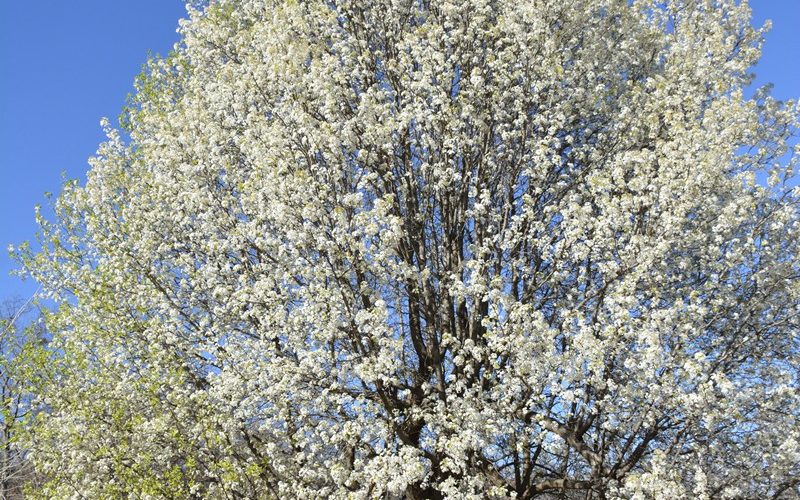
Staff Photo Amanda Bancroft
This Bradford Pear tree looks bright and beautiful in rural Northwest Arkansas, but a glance around the highways and hills will reveal how it has invasively spread into native woodlands and fields.
A rose by any other name would smell as sweet, but a callery pear still stinks whether you call it a Bradford pear, Pryus Calleryana, or “semen tree” as it’s now called.
NPR, Business Insider, and Wikipedia have accumulated various interpretations of the smell of the callery pear: rotting fish, chlorine, vagina, and semen. Yet people love planting them and basking in their beauty.
Like the nurseries and landscapers who plant these trees, scientists don’t really care how the tree smells. Plenty of things in nature need to smell strongly, whether it’s to attract pollinators, repel predators, or notify the vultures flying hundreds of feet in the sky. Scientists also don’t really care how gorgeous the trees look in springtime and fall, either. They aren’t redecorating the living room, they’re protecting native ecosystems and considering the needs of all species – including humans. This is why, when the National Park Service, municipalities, botanists and ecologists all suggest we stop planting Bradford pear trees and begin cutting them down, it has little to do with how ugly they smell or how beautiful they look. It’s not an aesthetics debate.
Callery pear trees are native to China and were introduced as ornamentals with high resistance to blight and tolerance for a wide variety of soil types, but low resistance to storms and ice. They are easily damaged due to their weak branch system, and have a short life span — around 20 years. The fruit isn’t edible by humans, but birds rapidly distribute the seeds. They can’t self-pollinate, but instead hybridize with other cultivars to form wild offspring that quickly crowd out the native maples, redbuds, dogwoods, oaks and so on.
The offspring often grow thorns that destroy tractor tires, so they can’t be mowed down. Pull out small saplings when the soil is moist. Cut or girdle medium-sized trees, and be sure to remove stumps and roots or they might grow back. If possible, get professional help with large trees to ensure safe removal or proper application of chemicals that will do the least harm to the environment.
But these trees are so pretty!
Yes, they are pretty like our white blossoming native serviceberry and flowering dogwoods and yellow-woods. Science is not about preference or taste. Instead we hope to keep native ecosystems healthy. The recommendation that we have whole healthy ecosystems is not the same as the recommendation of chocolate ice cream. Science is also not about shaming you. It’s just information.
If you feel bad for having a callery pear in your yard and wish it weren’t there, just plan on removing it whenever you get around to it. Do not call yourself (or others) bad names. Make a plan, and take action. Wouldn’t it be nice if xenophobia and anti-immigrant sentiment were applied to exotic invasive species instead?
Amanda Bancroft is a writer, artist, and naturalist building an off-grid cottage for land conservation on Mt. Kessler. She and her husband Ryan blog about their adventures and offer a solar-hosted online educational center on how to make a difference with everyday choices at: www.RipplesBlog.org.










